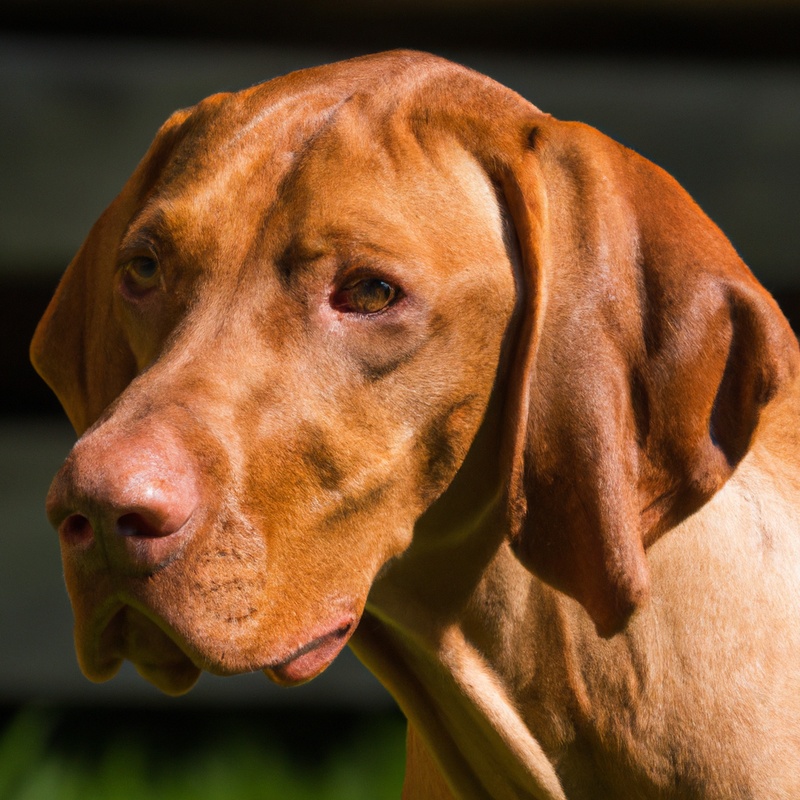How Do I Introduce a Vizsla To Other Dogs At a Dog Park?
Key Takeaways:
- Observe the body language and behavior of both the Vizsla and the other dogs before initiating any introductions.
- Start with controlled, on-leash introductions and gradually progress to off-leash interactions if both dogs show positive and relaxed behavior.
- Use positive reinforcement techniques to reward good behavior and ensure a positive experience for your Vizsla and the other dogs.
- Be prepared to intervene and remove your Vizsla from the situation if any signs of aggression or discomfort arise during the introductions.
Have you ever wondered how to introduce your Vizsla to other dogs at a dog park? As a passionate Vizsla owner myself, I understand the importance of socialization for this energetic and sociable breed.
In this article, I will share valuable insights and practical tips on successfully introducing your Vizsla to other dogs at a dog park.
We’ll discuss the history and characteristics of Vizslas, their socialization needs, and how to prepare them for positive interactions. I’ll also address common challenges and provide guidance for ensuring a positive experience for your Vizsla and other dogs.
So, let’s dive in and make those dog park outings a tail-wagging success!
| Step | Actions |
| 1 | Observe the dog park environment from outside to assess the atmosphere and energy levels of the dogs present. |
| 2 | Ensure your Vizsla is properly socialized and has basic obedience training before introducing it to other dogs at the park. |
| 3 | Choose an appropriate time to go to the dog park when it is not overly crowded, allowing for controlled introductions. |
| 4 | Keep your Vizsla on a leash initially for control and to help establish boundaries during the introduction process. |
| 5 | Start by introducing your Vizsla to calmer, well-behaved dogs one-on-one in a separate enclosed area (if available). |
| 6 | Observe the body language of both dogs during the introduction process, looking for signs of comfort or tension. |
| 7 | If the initial introduction goes well, allow your Vizsla to interact with a small group of dogs under close supervision. |
| 8 | Stay attentive and ready to intervene if any signs of aggression or discomfort arise between dogs. |
| 9 | Gradually increase the duration of social interactions and the number of dogs your Vizsla interacts with, always prioritizing safety and positive experiences. |
| 10 | Reward your Vizsla for positive behavior during social interactions with other dogs, reinforcing good manners and calmness. |
Understanding the Vizsla breed
Brief history and characteristics of Vizslas
Vizslas have a rich history that dates back to the 10th century in Hungary. These versatile hunting dogs were bred for their exceptional tracking and retrieving skills.
They are known for their striking appearance, with their sleek golden rust coat and expressive eyes.
Vizslas are highly energetic and require ample exercise to stay happy and healthy. They are also intelligent and trainable, making them great companions for active individuals or families.
With their friendly and affectionate nature, Vizslas thrive on human companionship and are generally good with other dogs.
Socialization needs and temperament of Vizslas
Socialization is crucial for Vizslas. They are social and friendly dogs that enjoy being around people and other dogs.
Early and ongoing socialization is important to ensure they grow up to be well-rounded and confident.
Introduce them to different environments, experiences, and various kinds of people and animals. Familiarize them with different sounds and situations to prevent fear or anxiety.
Positive reinforcement training and regular interactions with other dogs will help them thrive.
Remember, a well-socialized Vizsla is a happy and balanced companion.
Preparing to introduce a Vizsla to other dogs at a dog park
Ensuring proper vaccinations and health check-ups
Before introducing your Vizsla to other dogs at a dog park, it’s important to ensure that they are up-to-date on vaccinations and have had a recent health check-up. This helps prevent the spread of contagious diseases and ensures your Vizsla is in good health.
Make sure to visit your veterinarian to discuss and schedule the necessary vaccinations, including rabies, distemper, and parvovirus.
Additionally, have your Vizsla examined for any underlying health issues that may impact their interactions with other dogs. Taking these precautions will help keep your Vizsla and other dogs safe and healthy.

Basic obedience training for a Vizsla
Training a Vizsla in basic obedience is essential for a well-behaved and happy dog. Start with simple commands like sit, stay, and come.
Use positive reinforcement techniques, such as treats and praise, to reward good behavior.
Consistency and patience are key. Gradually increase the difficulty of the commands and practice in different environments.
Socialization with other dogs is also important, so consider enrolling your Vizsla in a puppy class or arranging playdates with friendly dogs.
Remember, training is an ongoing process, so be consistent and have fun!

Familiarizing the Vizsla with different environments
To familiarize your Vizsla with different environments, expose them gradually to new places, sounds, and situations.
Start with quiet and familiar places, then gradually introduce them to more stimulating environments.
Use positive reinforcement, rewards, and treats to make these experiences enjoyable.
Socialize your Vizsla with other dogs and people to help them feel comfortable and confident.
Regularly expose them to different environments to build their confidence and adaptability.
Monitor their reactions and adjust the pace accordingly.
Always prioritize their safety and well-being.
Tips for introducing a Vizsla to other dogs at a dog park
Observing the Vizsla’s body language and behavior
When introducing a Vizsla to other dogs at a dog park, it’s important to observe their body language and behavior.
Look for signs of relaxation, such as loose body posture and a wagging tail.
Pay attention to any signs of tension or aggression, like stiff body language or growling.
If your Vizsla seems comfortable and socializes well with other dogs, that’s a good sign.
However, if they appear anxious or uncomfortable, it’s best to give them space and not force interactions.
Each dog is unique, so be mindful of their individual cues and needs.

Starting with controlled introductions on-leash
When introducing your Vizsla to other dogs at a dog park, it’s important to start with controlled introductions on-leash. This allows you to have more control over the situation and ensures the safety of all dogs involved.
Begin by keeping the leashes loose and allowing the dogs to sniff and greet each other calmly.
Observe their body language and intervene if necessary. Gradually increase off-leash time as they become more comfortable with each other.
Gradually decreasing physical restrictions and allowing off-leash interaction
To gradually decrease restrictions and allow off-leash interaction between your Vizsla and other dogs at a park, start by introducing them on a leash to assess their behavior and comfort level.
Once they are comfortable, begin removing the leash in a controlled environment with a secure fence.
Observe their interactions closely, and if everything goes well, you can gradually introduce them to more dogs off-leash.
Keep the initial sessions short and supervised, gradually increasing the duration and number of dogs.
Always prioritize safety and remember to closely monitor their interactions throughout the process.
Handling common challenges during introductions
Dealing with aggression or fear from other dogs
When it comes to dealing with aggression or fear from other dogs, there are a few key things to keep in mind. First, it’s important to stay calm and avoid panicking, as this can escalate the situation.
Instead, try to redirect your dog’s attention and provide positive reinforcement for calm behavior.
Additionally, creating distance between your dog and the other dog can help diffuse tension. If necessary, seek professional help from a trainer or behaviorist for guidance tailored to your specific situation.
Managing overexcitement or excessive energy in the Vizsla
If your Vizsla has a tendency to get overexcited or have excessive energy, there are a few strategies you can try. Firstly, make sure your Vizsla gets plenty of physical exercise every day to help burn off some energy.
Regular walks, runs, and playtime are essential.
Secondly, mental stimulation is also crucial for managing their energy levels. Consider puzzle toys, obedience training, or agility activities.
Finally, be consistent with your expectations and use positive reinforcement to reward calm behavior.
Addressing any signs of discomfort or stress in the Vizsla
If your Vizsla is displaying signs of discomfort or stress during introductions with other dogs at a dog park, it’s important to address these signs to ensure their well-being. Here are a few steps you can take to help them feel more comfortable:
- Watch for body language: Pay attention to your Vizsla’s body language, such as stiff posture, tucked tail, raised hackles, or avoiding eye contact. These signs indicate stress or unease.
- Give them space: If your Vizsla is showing signs of discomfort, give them some space and don’t force interactions. Allow them to approach other dogs at their own pace.
- Gradual introductions: Rather than introducing your Vizsla to multiple dogs at once, start with one calm and well-behaved dog. Gradually introduce them to more dogs over time.
- Positive reinforcement: Encourage positive associations with other dogs by rewarding your Vizsla with treats and praise when they display calm behavior during interactions.
- Seek professional help: If your Vizsla continues to show signs of distress or if you’re unsure how to address their discomfort, consult a professional dog trainer or behaviorist for guidance and support.
Remember, every dog is unique, and it may take time for your Vizsla to feel completely at ease with other dogs. Patience, understanding, and consistent, positive experiences will help them thrive.
Ensuring a positive experience for the Vizsla and other dogs
Encouraging appropriate play and interactions
Encouraging appropriate play and interactions with other dogs is important for a positive experience at the dog park. Start by observing your Vizsla’s body language and ensuring they are comfortable.
Allow them to approach other dogs at their own pace.
Avoid forcing interactions or allowing rough play. Interrupt any inappropriate behavior and redirect their attention to more appropriate play.
Remember to praise and reward your Vizsla for good behavior to reinforce positive interactions.
Providing frequent breaks and rest time
One important thing to remember when introducing your Vizsla to other dogs at a dog park is to provide frequent breaks and rest time for your pup. This will help prevent overstimulation and ensure a positive experience for everyone involved.
Take breaks every 15-20 minutes, give your Vizsla some water, and let them relax before continuing the play session.
This will help keep them happy, healthy, and stress-free during park outings.
Rewarding good behavior and reinforcing positive associations
When introducing your Vizsla to other dogs at a dog park, it’s important to focus on rewarding good behavior and reinforcing positive associations.
Make sure to praise and provide treats when your Vizsla displays friendly and calm behavior towards other dogs.
This will help them associate positive experiences with interacting with other dogs, creating a more enjoyable and relaxed environment for everyone.
Remember to always set your Vizsla up for success by choosing appropriate playmates and monitoring their interactions closely.
Frequently Asked Questions
How long does it take for a Vizsla to adjust to other dogs?
Introducing a Vizsla to other dogs can be a gradual process that requires patience.
The adjustment period can vary depending on the individual dog’s personality and previous socialization experiences.
Some Vizslas may adapt quickly within a few weeks, while others may take several months.
It’s important to take things at your dog’s pace and provide positive reinforcement during interactions with other dogs.
Supervision and controlled environments, like a dog park or playdates, can help facilitate the adjustment process.
Trust your instincts and observe your dog’s behavior to determine when they are ready for more interactions.
Can an adult Vizsla be introduced to other dogs?
Yes, an adult Vizsla can be introduced to other dogs.
It is important to introduce them slowly and in a controlled environment, such as a dog park or on neutral territory.
Gradually increase the amount of time they spend together, while closely monitoring their behavior.
Provide positive reinforcement for good interactions and give them plenty of space if they seem uncomfortable.
Consulting a professional dog trainer or behaviorist can be helpful in ensuring a successful introduction.
What should I do if my Vizsla shows signs of aggression towards other dogs?
If your Vizsla shows signs of aggression towards other dogs, it’s important to take action to prevent any further issues. Here are a few steps you can take:
- Assess the situation: Determine if your Vizsla’s aggression is rooted in fear, insecurity, or something else. Understanding the underlying cause can help you address the issue more effectively.
- Seek professional help: Consult with a professional dog trainer or behaviorist who specializes in aggression. They can provide guidance and develop a customized training plan to address your Vizsla’s specific needs.
- Gradual socialization: Introduce your Vizsla to other dogs in controlled environments, starting with calm and well-behaved individuals. Use positive reinforcement techniques to reward calm behavior and gradually increase the level of interaction over time.
- Manage the environment: Avoid situations that might trigger your Vizsla’s aggressive behavior. This could include keeping them on a leash, using muzzles if necessary, or avoiding crowded dog parks until their behavior improves.
- Consistency and patience: Training takes time and consistency. Stay patient and follow the guidance provided by professionals. With time and dedication, you can help your Vizsla overcome their aggression and enjoy positive interactions with other dogs.
Final Verdict
Introducing a Vizsla to other dogs at a dog park can be a rewarding and positive experience with proper preparation and guidance. Understanding the Vizsla breed, ensuring vaccinations and health check-ups, and providing basic obedience training are crucial steps.
Observing body language, starting with controlled introductions, and addressing common challenges are key tips for a successful introduction.
By prioritizing the Vizsla’s comfort and socialization needs, and promoting positive interactions, you can create a harmonious and enjoyable environment for both your Vizsla and the other dogs at the dog park. Remember, patience, consistency, and positive reinforcement are the keys to a successful introduction.








